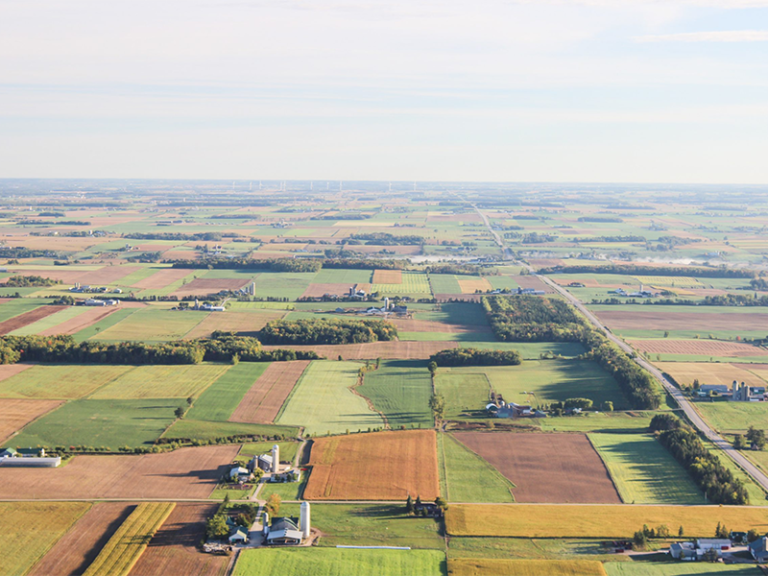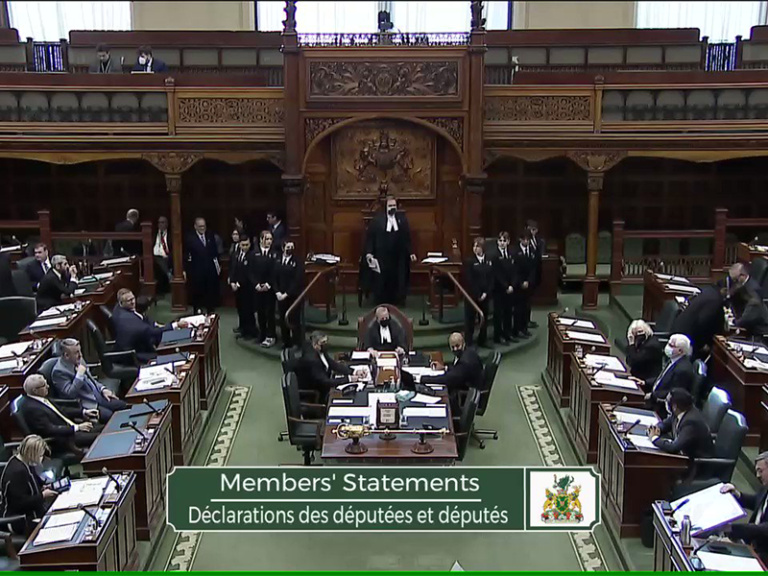First published: July 22, 2004
by Keith Oliver
This article appeared in the Cobourg Daily Star on June 9, 2004, the day before a public meeting was held to solicit input from the public on the development of a Secondary Land-Use Plan for Area C. It became the first in a series of articles about the process of planning for the growth and development of human settlements in general, and in particular, the 500 hectare Northeast corner of Cobourg, presently known as Area C. Thirty years from now, when Area C is fully developed, Cobourg will be twice its present day size.
On Thursday evening, at the Lion’s Centre, the Cobourg Planning Department will hold an “urban design visioning exercise”. The outcome of this public consultation will guide the development of a Secondary Land-Use Plan for the North East corner of the town. This two square mile, or five hundred hectare area, known as Area C, will take twenty to thirty years to build-out and will more than double the size of present day Cobourg.
To its credit, the town is attempting to get ahead of development pressures and determine the kind of growth that is best for Cobourg as a whole. In simplistic terms this goal is referred to as “good planning”, something that is encouraged and defined by the Provincial Policy Statements. The question is, will the proposed process achieve this?
You may wonder why the citizens of Cobourg should be interested in such a seemingly arcane and irrelevant event as a “visioning exercise” that will have its full impact when a quarter to one fifth of the readers of this article, including myself, will probably have passed away. The simple answer is that each of us has a responsibility to ensure that the future life of our children and our community, is equal to or better than, the life we have experienced.
Over the years, I’ve participated in a number of visioning exercises, both in Canada and in the United States, and it is my belief that because of the way these events are normally structured and run, they represent little more than an exercise in maintaining the status quo and satisfying the understandable desire of individuals and developers to maximize the return on the economic investment represented by their ownership of land. For the sake of future generations, and in light of the many problems our present day communities face, we must do better than this!
At one such visioning session I experienced in London, participants complained bitterly about the increasing traffic congestion in the city, and expressed the need for more and wider roads. They then proceeded to produce land-use plans which excluded town-houses and apartments. No one had explained, for example, that it is the excessive use of low density single family housing that was responsible for our totally automobile-dependant life style and the need for two-cars for every family. No one explained the attractive alternatives to the single family home on a large lot that have been used successfully elsewhere. No one explained that traffic congestion is the result of poor land-use planning based only on the needs of people in cars, and that no amount of road building or transit subsidies will cure the problem.
No one offered an opportunity to discuss other problems and explore workable and attractive, alternative land-use planning strategies that would not only reduce our automobile dependancy, but also result in walkable neighbourhoods with small retail and service centres that could satisfy daily and weekly needs; a better choice of housing with easy access to public open space; the more efficient use of land that would reduce the cost of building, maintaining and replacing municipal services and roads and make possible a well designed and affordable public transit system that would provide an attractive alternative to the automobile.
At the end of the evening in London, the participants, although no better informed than when they came, left feeling satisfied, the consultants gathered up the irrelevant information to be used in their land-use plans, and London’s traffic congestion continued to worsen.
The fundamental problem here is that seldom, if ever, do these public consultations begin with an honest and frank recognition and discussion of the growth and development problems that face a specific community and their possible solutions . Not only does this reduce the contribution that those attending can make, but it also undermines the development of a carefully considered consensus that must be present in a community to effect meaningful change. Without an informed consensus based on an understanding of the consequences of land-use planning decisions on the economy and functioning of the built-out community and the resulting quality of life for all, a plan will be prepared, accepted by town council, and eventually ignored.
To compound this problem, elected municipal councillors commonly believe that any kind of development that increases the property tax base is good for the community. This is an over-simplified value judgement based on numbers and a hoped for flow of property tax dollars. It has little to do with what the real goal should be, which is to maintain and improve the quality-of-life for all, and the creation of a community-based economic development policy that works with quality-of-life goals to attract high quality, long term employers that offer jobs with a future and decent wages.
In all of this Cobourg has an excellent start. As much as Cobourg has changed in the last twenty to thirty years, it still retains many small town values and an involved and caring community. It has a unique internal road system and links by rail and road to other communities; an excellent recreational potential through the development of the waterfront, the trailer park, its sports fields and surrounding golf clubs and the potential offered by the possibility of an urban trail system throughout the town including both branches of Brook Creek in Area C. It has the Old Town Residential Area, some aspects of which can serve as a model for future development and historical continuity.
Through a well thought out process that will lead to a well designed plan for the development of Area C and the political will to carry it out, the citizens of Cobourg have a once in a life time opportunity to influence the future of this town. Let’s hope that the planners and politicians in charge have the wisdom to do it properly, openly and in the interests of all.
Note: Part 1


